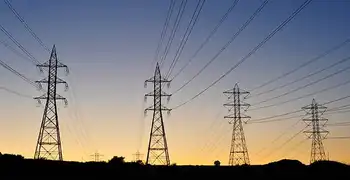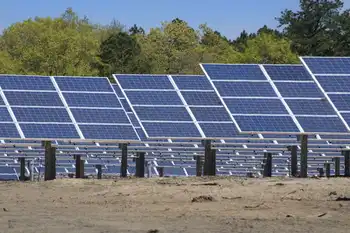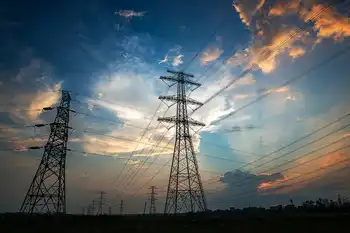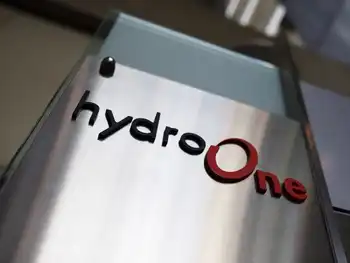ERCOT Issues RFP to Procure Capacity to Alleviate Winter Concerns
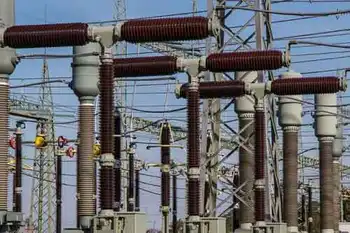
NFPA 70e Training - Arc Flash
Our customized live online or in‑person group training can be delivered to your staff at your location.

- Live Online
- 6 hours Instructor-led
- Group Training Available
ERCOT Winter Capacity RFP seeks up to 3,000 MW through generation and demand response to bolster Texas grid reliability during peak load, leveraging Reliability Must-Run, incentive factors, and EEA risk mitigation for the 2023-24 season.
Key Points
An ERCOT initiative to procure 3,000 MW of generation and demand response to reduce EEA risk and improve reliability.
✅ Targets 3,000 MW from generation and demand response
✅ Uses RMR-style contracts with flexible incentive factors
✅ Aims to lower EEA probability below 10% this winter
The Electric Reliability Council of Texas (ERCOT) issued a request for proposals to stakeholders to procure up to 3,000 MW of generation or demand response capacity to meet load and reserve requirements during the winter 2023-24 peak load season (Dec. 1, 2023, through Feb. 29, 2024), amid ongoing Texas power grid challenges across the region.
ERCOT cited “several factors, including significant peak load growth since last winter, recent and proposed retirements of dispatchable Generation Resources, and recent extreme winter weather events, including Winter Storm Elliott in December 2022, Winter Storm Uri in February 2021, and the 2018 and 2011 winter storms, each of which resulted in abnormally high demand during winter weather.” It now seeks additional capacity under its “authority to prevent an anticipated Emergency Condition,” reflecting nationwide blackout risks identified by grid experts.
In its notice regarding the RFP, ERCOT identified a number of mothballed and recently decommissioned generation resources that may be eligible to offer capacity under the RFP. It further stated that offers must comport with the format of its “Reliability Must-Run” agreement but could include a proposed “Incentive Factor” that reflects the revenues the unit owners determine would be necessary to bring the unit back to operation. It added that the Incentive Factor is not necessarily limited to 10%. Providers of eligible demand response can submit offers based on similar principles that are not necessarily constrained by cost. The notice identifies potential acceptable sources of demand response, describes certain parameters for the kinds of demand response that are permitted to respond to the RFP, and outlines the time periods during which ERCOT must be able to deploy the demand response resources to improve electricity reliability across the system.
To meet the Dec. 1, 2023, service start date, ERCOT developed an aggressive timeline to solicit and evaluate proposals through the RFP. Responses to the RFP are due Nov. 6, 2023. ERCOT’s schedule provides that it will notify market participants that obtain awards on Nov. 23, 2023. Expect contracts to be executed by Nov. 30, 2023.
Unlike Regional Transmission Organizations in the Northeastern United States, ERCOT does not have a capacity market. Instead, ERCOT relies on a high price cap of $5,000 per MWh for its energy market (decreased from the $9,000 per MWh cap in effect during Winter Storm Uri) and an Operating Reserve Demand Curve adder that pays additional funds to generators supplying power and ancillary services, an area recently scrutinized for improper payments when supply conditions are tight. In the wake of Winter Storm Uri, some calls were made to have ERCOT adopt a capacity market for reliability reasons, and a number of legal battles continue to play out in the wake of Winter Storm Uri. (See recent McGuireWoods legal alert “Winter Storm Uri Power Dispute Reaches the Supreme Court of Texas.”) Though a capacity market was not adopted, the Texas Legislature approved a $7.2 billion loan program, widely described as an electricity market bailout for generators, to build up to 10,000 MW of dispatchable generation. The legislature also approved a version of the Public Utility Commission of Texas’ proposal to establish a “Performance Credit Mechanism,” but with a cost cap of $1 billion.
The loss of life and economic impacts of Winter Storm Uri in 2021, along with the energy crunches and calls for conservation this past summer, are driving changes to ERCOT’s “energy-only” market, including electricity market reforms under consideration. Texas policymakers are providing multiple financial incentives to promote investment in dispatchable on-demand generation, and voters will consider funding to modernize generation measures this year to make the Texas grid more reliable and able to deal with power demand from a growing economy and increased demand for electricity driven by weather. In the meantime, ERCOT’s plan to procure 3,000 MW through this RFP process is a stopgap measure intended to bolster reliability for the upcoming winter season and lower the probability of load shed in the event of severe winter weather.





